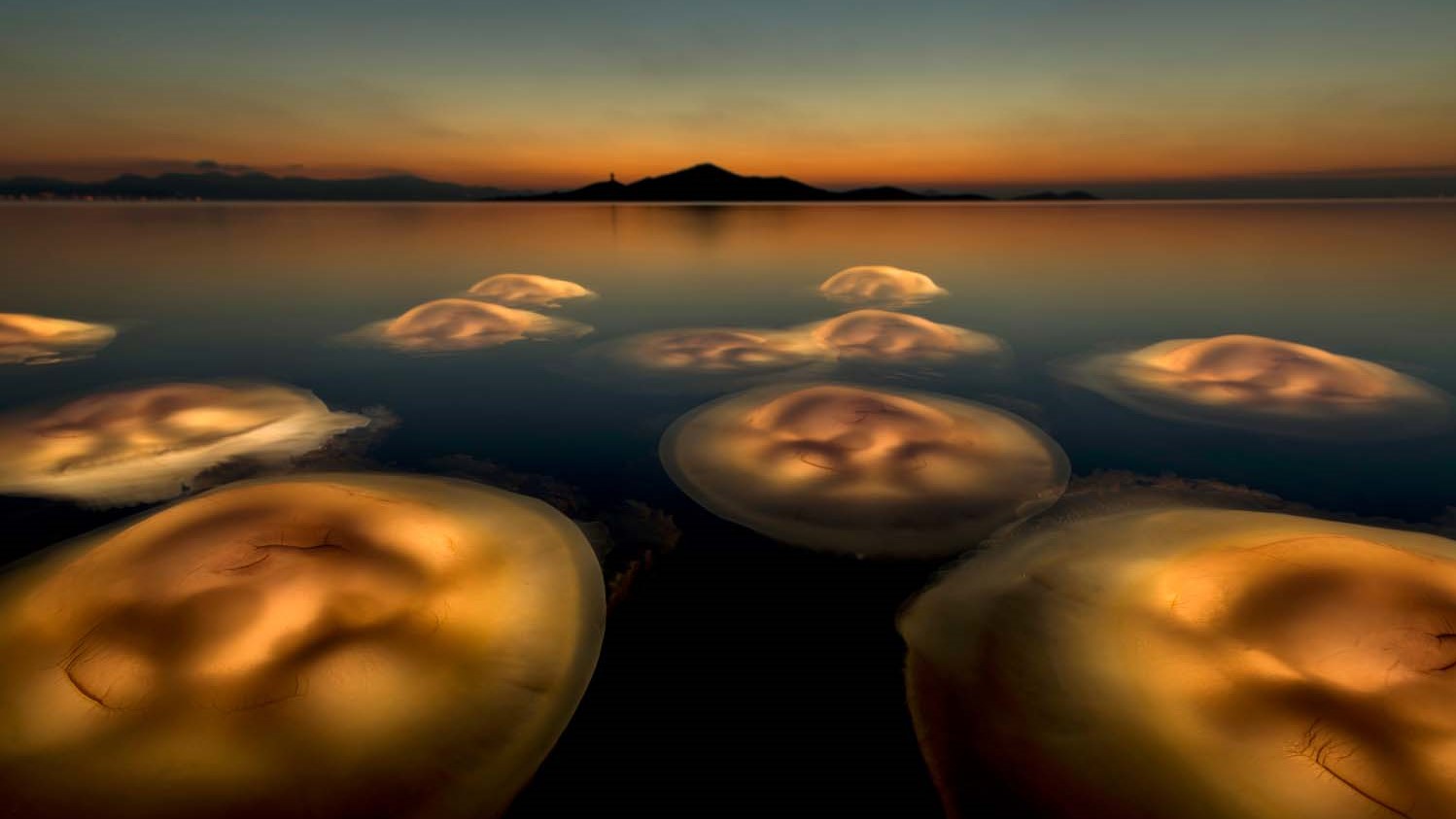Photo trickery captures ethereal jellyfish 'ballet' in Spanish lake
There are fewer jellies in the photo than you might think.

A clever photographer has used some camera trickery to capture a stunning shot of what appear to be around a dozen "dancing" jellyfish in a Spanish lake. But there's a twist: There are only two jellyfish.
Spanish photographer Angel Fitor snapped the photo, titled "Medusa Ballet" (named for the free-floating life stage of jellyfish) at Mar Menor, Europe's largest saltwater lagoon. The mesmerizing image features 11 Mediterranean jellyfish (Cotylorhiza tuberculata), also known as fried egg jellyfish, whose translucent orange bells perfectly match the setting sun behind a far-off mountain on the horizon. The shot was voted the overall winner at the European Wildlife Photographer of the Year 2021 competition on Oct. 28.
However, if you look closely at the floating cnidarians, you'll realize that they look remarkably alike. That's because there are actually only two jellyfish in the shot. But this isn't a case of copy and paste; instead, Fitor used multiple flashes to capture the pair as the jellies moved across the water's surface on a gentle current.
Related: Photos: Stunning shots of the natural world and wildlife
"For more than six years, I tried to realize this image idea, and I had to put up with countless failed attempts," Fitor said in a statement. "Which is not surprising considering the unpredictability of the factors that were prerequisite for success."
The award-winning photo was originally taken in 2014, shortly before the first of several mass die-offs of marine life in Mar Menor over the last five years that have decimated the ecosystem. The most recent die-off in August was the worst yet and led to tons of dead fish washing ashore, according to the BBC.
Environmentalists blame persistent agricultural pollution that has degraded the water quality in the lagoon and caused frequent algal blooms. Dubbed "the green soup" by locals, these blooms of algae suck up the oxygen in the water and suffocate the creatures below the surface.
Sign up for the Live Science daily newsletter now
Get the world’s most fascinating discoveries delivered straight to your inbox.
Fitor described his photo as "an ode to the unique natural heritage Mar Menor once was."
The contest judges said a combination of the photographer's skill and the subject's environmental significance helped the photo win the award.
"The powerful image spoke strongly to us jury members on many levels," competition judge Jim Brandenburg said in the statement. "After the ecological catastrophe that occurred only a short time later at the place where it was taken, it also speaks about the massive environmental problems of this region."
Originally published on Live Science.

Harry is a U.K.-based senior staff writer at Live Science. He studied marine biology at the University of Exeter before training to become a journalist. He covers a wide range of topics including space exploration, planetary science, space weather, climate change, animal behavior and paleontology. His recent work on the solar maximum won "best space submission" at the 2024 Aerospace Media Awards and was shortlisted in the "top scoop" category at the NCTJ Awards for Excellence in 2023. He also writes Live Science's weekly Earth from space series.









